A magnificent indoor plant that enchants with its beauty and adaptability is the begonia Elatior. This article examines the special qualities and allure of Begonia Elatior, emphasizing its appeal as a well-liked option for people who enjoy indoor plants.
The Begoniaceae family member Begonia Elatior is well-known for its gorgeous flowers and vivid foliage. This flowering plant, which has its roots in tropical areas, is a popular addition to indoor spaces all over the world.
We’ll examine Begonia Elatior’s physical characteristics and flowering traits in more detail in this article. Additionally, we’ll offer helpful advice on how to maintain and care for this plant to promote its healthy growth. Additionally, we’ll go over various propagation techniques and offer original suggestions for incorporating Begonia Elatior into your indoor décor.
You will have a better understanding of why Begonia Elatior is an essential indoor plant by the end of this article, as well as how to grow it successfully and appreciate its beauty in your own home.
So let’s travel into the world of Begonia Elatior and learn about its captivating allure.
Brief description of Begonia elatior
The captivating flowering plant known as Begonia Elatior, a member of the Begoniaceae family, is prized for both its beauty and adaptability. Let’s explore this remarkable plant’s history and environment in more detail.
History and Natural Environment
Begonia elatior is a tropical plant native to South America, primarily Brazil, Peru, and Ecuador. It thrives in warm, humid environments, and is frequently found in tropical settings and lush rainforests.
Classification of Begonia Elatior
Flowering plant of the Begoniaceae family, known for its colorful and aesthetically pleasing members. This plant is a standout member of the plant family, with exquisite blooms and vibrant foliage.
Unique Characteristics

Begonia Elatior is a well-liked option among fans of indoor plants thanks to a number of distinctive qualities.
Leaves
Begonia Elatior has stunning foliage that is distinguished by its glossy, waxy texture. Deep greens, burgundies, silvers, and other vibrant colors are just a few of the leaf’s many available hues. Some cultivars may even exhibit striking patterns or variegation, which heightens the visual appeal.
Growth Pattern
The upright growth habit of Begonia elatior is evident, and the stems can vary in height depending on the variety. Its small size makes it perfect for all sizes of indoor spaces.
Flowering
The ability of Begonia Elatior to produce gorgeous flowers is one of its most alluring features. These flowers are available in a wide range of hues, from vivid reds and pinks to delicate pastels. The flowers are grouped together to create a bouquet-like effect that is sure to draw attention.
Flexibility
A variety of decorative uses are suitable for the adaptable indoor plant, Begonia Elatior. This plant brings a touch of elegance and charm to any indoor space, whether it is used as a stand-alone centerpiece or combined with other plants in an arrangement.
Begonia Elatior is a plant that is sure to captivate plant lovers and bring joy to any indoor setting thanks to its remarkable qualities and intriguing origins. In the sections that follow, we’ll delve more deeply into the upkeep and maintenance of Begonia Elatior and examine its special flowering traits.
Physical Identifiers

The visually stunning indoor plant Begonia Elatior has many unique physical characteristics. Let’s examine these characteristics in greater detail to comprehend its appeal.
Leaves of Begonia Elatior
This plant has beautiful foliage that captivates onlookers with its glossy texture and vibrant colors. The leaves’ asymmetrical shape, which is frequently medium to large in size, adds visual interest. Some varieties’ leaves may be deeply lobed or texturized, adding to their allure.
The foliage of Begonia Elatior has an array of beautiful colors. These foliage hues, which range from rich green to burgundy and silver, create an exquisite backdrop for the plant’s showy flowers. Some cultivars have leaves that have lighter and darker patterns on them, making for an eye-catching display.
Plants
The Begonia Elatior’s most beautiful feature is without a doubt its flowers. These flowers captivate with their vivid hues and minute details. The flowers are a real feast for the eyes because they come in a variety of colors, from flamboyant reds and pinks to delicate pastels.
Because they are held above the foliage, flower clusters, or inflorescences, create a striking contrast that highlights their beauty. Each individual flower has several petals, many of which have a distinctive texture or unusual shape. The blossoms’ asymmetrical shapes or overlapping layers can add visual interest and depth.
Growth Pattern
Typically, Begonia Elatior grows uprightly, with strong stems supporting the foliage and flowers above the plant. Depending on the cultivar, the stems can range in height from short varieties that stay under a foot tall to taller types that grow to a height of two feet or more.
Begonia Elatior’s compact size makes it the ideal plant for indoor areas because it can be placed easily on windowsills, countertops, or in hanging baskets. It blends in perfectly with any decorative arrangement thanks to its capacity for vertical growth without spreading out.
Flowering Identifiers
The extraordinary flowers on Begonia Elatior are truly stunning to behold. Let’s examine these blooms’ characteristics in more detail and discover what makes them so alluring.
Flowering Season
A flowering plant known as Begonia Elatior blooms mainly in the fall, winter, and spring, which makes it the ideal plant to brighten up the gloomy seasons. This is frequently influenced by how much sunlight and light the area receives. Their flowers must grow in moderate to high light; in low light, flowering is likely to be infrequent or nonexistent.
Flower Composition
Begonia Elatior produces clusters of flowers that rise above the foliage in stunning bouquets. The flowers come in a variety of striking hues, from solid to bicolor, tricolor, or mixtures, including bright red, pink, orange, yellow, and white. They can have a wide range of petal textures and shapes, some of which are asymmetrical or have overlapping layers.
Flower Care
Depending on their care and the surrounding environment, Begonia Elatior blooms can last for several weeks. To ensure the longevity of the blooms, proper maintenance is crucial. Longer-lasting blooms may be more likely under conditions of sufficient watering, light, humidity, and temperature. Watering needs to be consistent with keeping the soil from getting too dry or too wet. The plant can tolerate most indoor temperatures, but it cannot withstand very low ones.
The flowers can be delicately pinched off when they have lost their blooms. This promotes the development of new flowers and keeps the plant flourishing and healthy.
Flexibility
Begonia Elatior is a very adaptable indoor plant thanks to its flowers. It can be used as a stand-alone centerpiece or as part of floral arrangements to add elegance and charm to any indoor setting. These gorgeous flowers are the ideal option for adding color, vibrancy, and warmth to homes, workplaces, and public spaces.
We can appreciate Begonia Elatior’s distinctive beauty and make wise decisions about its upkeep by being aware of its flowering traits. We will examine the proper upkeep needed to keep this magnificent plant flourishing in the sections that follow.
Care and Maintenance for Begonia Elatior

To keep your Begonia Elatior thriving and looking its best, it’s important to provide the proper care and maintenance. Here are some guidelines to ensure your plant remains healthy and vibrant.
Light Requirements
Begonia Elatior thrives in bright, indirect light. Place your plant near a window where it can receive filtered sunlight throughout the day. Avoid placing it in direct sunlight, as this can scorch the leaves and cause damage. If natural light is limited, you can supplement with artificial grow lights to provide the necessary light intensity.
Watering of Begonia Elatior
Proper watering is crucial for the health of your Begonia Elatior. Keep the soil consistently moist, but not soggy. It’s best to water when the top inch of soil feels slightly dry to the touch. Use room temperature or lukewarm water to prevent shocking the roots. Avoid overwatering, as excessive moisture can lead to root rot and other issues.
Humidity
Begonia Elatior appreciates higher humidity levels. You can increase humidity around the plant by placing a tray filled with water and pebbles underneath the pot. As the water evaporates, it will create a more humid environment. Alternatively, you can also use a humidifier or mist the leaves with water occasionally.
Temperature
This plant prefers room temperatures ranging from 65°F to 75°F (18°C to 24°C). Avoid exposing the plant to extreme temperatures or drafts, as this can be harmful to its health. Begonia Elatior is sensitive to cold drafts in the winter, so keep it away from them.
Fertilizer
Regular fertilization is important to support the growth and blooming of Begonia Elatior. Use a balanced, water-soluble fertilizer formulated for indoor plants. Dilute the fertilizer to half the recommended strength and apply it every four to six weeks during the growing season. Be cautious not to over-fertilize, as it can cause damage to the plant.
Pruning and Grooming for Begonia Elatior
To keep your Begonia Elatior in shape and encourage bushier growth, prune it as needed. Remove any dead, yellowed, or damaged leaves promptly to maintain the plant’s overall health. Pinch back the stem tips to encourage branching and fuller growth. Grooming the plant regularly will enhance its appearance and ensure it looks its best.
Pests and Diseases
Keep a close eye on your Begonia Elatior for signs of pests such as aphids, spider mites, or mealybugs. If detected, treat the infestation immediately using an appropriate insecticide or by washing the affected area with a mild soap and water solution. Also, monitor the plant for any signs of diseases like powdery mildew or root rot. Adequate light, proper watering, and good airflow will help prevent these issues.
By following these care and maintenance guidelines, you can provide the ideal growing conditions for your Begonia Elatior and enjoy its beauty for years to come.
Propagation of Begonia Elatior

Propagating your plants allows you to add to your collection or introduce this lovely plant to new people. Here are a few quick and easy methods for propagation and healthy growth.
Begonia Elatior Stem Cutting Propagation
Stem cuttings are a common and effective way to multiply Begonia elatior. Observe these actions to multiply your plant:
- Pick a robust, nodding stem that is not in bloom. The points at which leaves erupt from the stem are known as nodes.
- Trim the stem just below a node with a clean, sharp knife or pair of scissors, making sure the cut is 4 to 6 inches long.
- Take out the lower leaves so that there are only one or two sets remaining at the top.
- To encourage the development of roots, dip the cut end of the stem in a rooting hormone powder (optional).
- Create a well-draining potting mix, such as peat moss and perlite blended together.
- Dig a hole in the potting soil, then carefully insert the cutting, making sure to cover at least one node.
- After thoroughly moistening the cutting, place it in a warm, bright area with indirect light.
- Maintain a constant moisture level in the soil that is not wet.
- New growth should appear a few weeks later, indicating successful root development.
- You can transplant the new plant into a larger pot or garden once its roots have developed and it has grown several inches.
Leaf Cutting Propagation
Leaf cuttings are another way to propagate Begonia Elatior. Despite being a little slower than stem cuttings, this method can still produce good results. Using leaf cuttings, propagate your plant as follows:
- Select a leaf from the plant that is mature and healthy.
- Separate the leaf into smaller pieces, making sure that each piece has a main vein.
- Add a well-draining potting mix or a combination of peat moss and perlite to a tray or pot.
- Lay out the leaf pieces on the soil’s surface, making sure the cut ends are in direct contact with the ground.
- To ensure good contact, gently press the leaf sections into the ground.
- Mist water on the leaf sections to keep them moist.
- To create a humid environment, cover the tray or pot with a plastic bag or clear plastic dome.
- Put the tray in a cozy area with dappled light.
- Mist the soil occasionally to keep it moist but not saturated.
- Small plantlets should start to emerge from the leaf sections after a few weeks to a few months.
- The plantlets can be transplanted into individual pots once they have grown several inches and formed roots.
Begonia Elatior Propagation by Division
Another method of propagating Begonia Elatior is by dividing the plant, especially if you have a mature plant with multiple crowns. Take the following actions to divide your plant:
- Remove the plant from the pot gently, being careful not to trample the roots.
- Gently cut the root system into smaller pieces, making sure that each piece has a sound crown and roots.
- Prepare individual pots with potting mix that drains well.
- Plant each section that has been divided into separate pots, making sure the crown is level with the soil.
- After giving the pots plenty of water, set them in a warm area with dim lighting.
- Keep the soil adequately moist but refrain from overwatering.
- The divided sections should begin to develop roots and new growth after a few weeks.
You can easily increase your collection of Begonia Elatior by using these propagation methods, and you can also enjoy the beauty of these plants in a variety of settings. The rewarding process of propagation is also a wonderful way to introduce other plant lovers to Begonia Elatior.
Useful Tips and Decorative Designs
Aside from being beautiful on their own, these plants can be used in a variety of creative ways and decorative schemes to improve the aesthetic appeal of your space. Here are some imaginative suggestions:
Baskets to Hang
You can add a splash of color and elegance to your indoor or outdoor spaces with hanging baskets, which are a common way to display Begonia Elatior plants. Create an exquisite hanging basket by following these instructions:
- Pick a hanging basket that matches the design of your space and is both sturdy and attractive.
- Select a potting mix that is suitable for Begonia Elatior and has good drainage.
- Position your Begonia Elatior close to the basket’s edge, letting the foliage spill over the sides.
- To add a lush and textured look, add complementary trailing plants like ivy or creeping Jenny.
- Suspend the basket where bright, indirect light will reach your Begonia elatior.
Terrariums for a Begonia Elatior
Terrariums are an excellent way to create and display a miniature ecosystem. Follow these steps to create a terrarium for a Begonia Elatior:
- To increase airflow, choose a clear glass container with a lid or an open container.
- For drainage, add a layer of tiny pebbles or gravel at the bottom.
- To keep the terrarium fresh and eliminate odor, add a layer of activated charcoal.
- On top of the charcoal, add a well-draining potting soil appropriate for Begonia Elatior.
- Insert your Begonia Elatior into the ground, allowing room between each plant for growth.
- To improve the aesthetics, add decorative elements like moss, tiny rocks, or miniature figurines.
- Mist the terrarium from time to time to add humidity, but don’t overwater.
- To ensure healthy growth, place the terrarium in an area with direct light that is bright.
Center pieces
Beautiful centerpieces for your table or any other focal point in your space can be created with Begonia Elatior. Here’s how to make a captivating centerpiece:
- Pick a decorative vase or container that complements the design of your room.
- To keep your Begonia Elatior hydrated, fill the container with water.
- Trim a few wholesome Begonia Elatior blooms and arrange them in the container so that the flowers are the main attraction.
- Add complementary foliage or additional flowers to the arrangement to make it more aesthetically pleasing.
- Position the centerpiece on your table or in any other appropriate location, making sure it is illuminated by bright, indirect light.
Living walls
A distinctive and aesthetically stunning way to incorporate Begonia Elatior into your space is through living walls or vertical gardens. To make a living wall, adhere to these instructions:
- Pick a vertical surface like a wire mesh panel or a wooden frame.
- Fix planters or pockets to the ground, making sure they have adequate drainage.
- Add a well-draining potting mix appropriate for Begonia Elatior to the planters or pockets.
- Insert your Begonia Elatior into the pockets or planters, letting the foliage droop.
- Include additional complementary plants for a colorful and textured display, such as ferns or trailing vines.
- Place the living wall where it will be exposed to direct light that is bright.
You can highlight the beauty of your Begonia Elatior and create eye-catching displays in your home or garden by incorporating these inventive uses and decorative suggestions. Let your Begonia Elatior be the center of attention and have fun!
Begonia Elatior varieties

This is a popular and adaptable Begonia known for its large, showy blooms and glossy foliage. There are numerous varieties available, each with distinct characteristics that set them apart. Here are some of the most popular Begonia Elatior cultivars:
- B. Elatior Non-Stop series: This is a popular series with single and double bloom varieties, available in a wide range of colors such as red, pink, orange, white, and yellow. They are compact plants with big flowers and glossy foliage, making them great for containers and hanging baskets.
- B. Elatior Multiflora series: These plants have smaller flowers than the Non-Stop series but grow more vigorously and are more heat tolerant. They come in colors such as red, pink, white, and yellow.
- B. Elatior ‘Bertini’: This variety produces deep pink, fully double flowers with a delicate yellow center. It has a compact growth habit and glossy, dark green foliage.
- B. Elatior ‘Bloomify Red’: This is a relatively new variety with large red flowers and a mounded growth habit. It is heat tolerant and can bloom throughout the summer.
- B. Elatior ‘Corallina de Lucerna’: This is a popular variety with coral pink blooms and bronze-colored foliage. It has a cascading growth habit and is great for hanging baskets.
- B. Elatior ‘Merry Christmas’: This variety has double white flowers that resemble snowflakes, making it a popular choice for the holiday season. It has a compact growth habit and glossy, dark green foliage.
- B. Elatior ‘Pink Champagne’: This is a newer variety with large pink flowers and an upright growth habit. It blooms heavily throughout the summer and has glossy, dark green foliage.
- B. Elatior ‘Raspberry Swirl’: This variety has large pink flowers with white edges and a raspberry-colored center. It has a compact, mounded growth habit and glossy, dark green foliage.
These are just a few of the many varieties available, each with their own distinct characteristics and visual appeal. Whether you prefer bright colors, delicate blooms, or interesting foliage, there is a Begonia Elatior variety to suit your taste and style.
Conclusion
In , Begonia Elatior is a beautiful plant with many varieties for different tastes. From the vibrant Non-Stop series to the unique ‘Bertini’ with double pink blooms, there are many options.
Consider flower color, growth habit, and heat tolerance when choosing Begonia Elatior varieties for your growing conditions. Begonia Elatior has compact containers, cascading hanging baskets, and upright garden beds.
Visit plant nurseries, botanical gardens, or reputable online plant retailers to see all varieties. They can help you pick the best varieties for your aesthetic and growing conditions.
To help Begonia Elatior varieties thrive and show their beauty, remember to provide proper lighting, watering, and soil. Begonia Elatior varieties can enhance any indoor or outdoor space with their gorgeous blooms and glossy foliage.

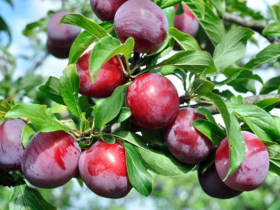


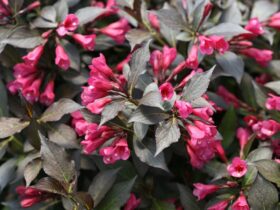
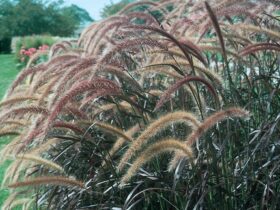
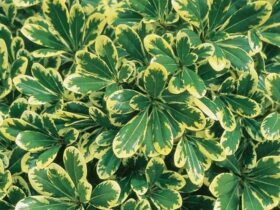


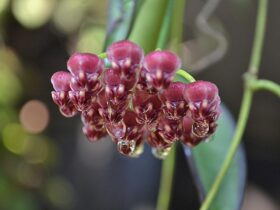

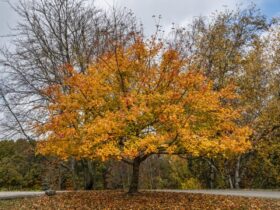
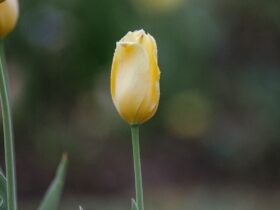
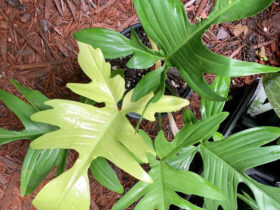
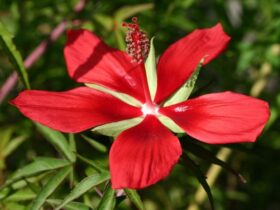
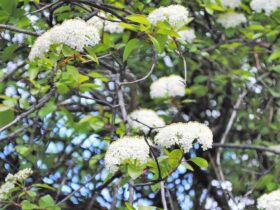
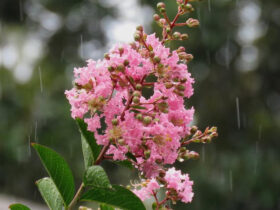
Leave a Reply